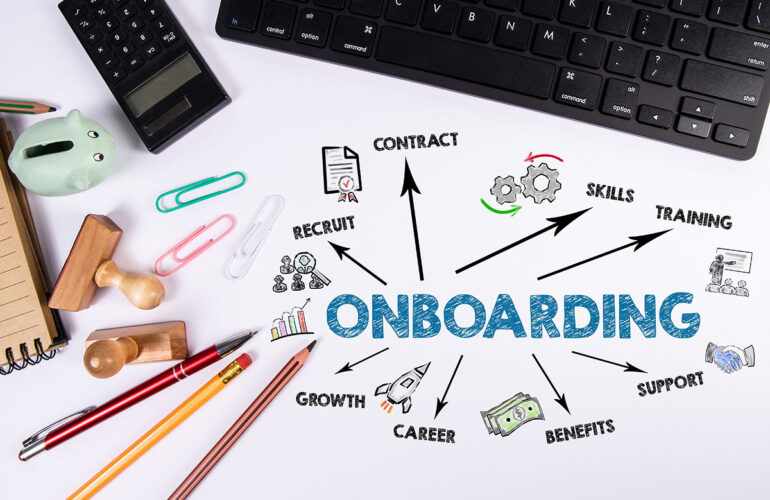Health care and so many other industries are currently experiencing a chronic problem in recruitment and retention of good, qualified employees. It seems like anywhere one turns, help wanted signs are plastered on doors, windows and marquees. While retaining good staff is an important goal, one way to achieve it is through not just recruitment methods, but once the potential candidate has made the cut, a well-designed, thoughtful and effective onboarding program can make the difference between losing another employee or retaining a great find.
Onboard New Hires for Keeps
Every step of the onboarding process should have employee retention in mind. A great start to the new hire’s experience involves forming lasting positive impressions and becoming emotionally attached to the team, position and company. This can be achieved by:
- Teaching necessary skills and knowledge
- Modeling ideal behavior that fits the role
- Introducing the new hire to key team members
- Sharing stories about the company or business
- Explaining the company culture to the new hire
Each one of these steps, and many more, are meant to make the new hire feel at home, as if he or she already belongs. This should be a time in which the new hire is told that they may be what’s been missing from the team. Statements like these can motivate the new hire to feel emotionally engaged and prepared to make a long-term commitment.
Necessary Components of Onboarding
- The Right Representative – Who is doing the onboarding? Is this manager a good role model and have effective relationship-building and communication skills? Sometimes the onboarding period may be unsuccessful because the wrong person is involved. A simple question to ask is this – “Does the company want another employee like the one who is doing the onboarding?” This is a critical question regarding retention.
- Thorough Training – Is the new hire really getting all of the relevant information about the ins and outs of the position, or are they learning more about the politics and the underbelly of the organization? When new hires don’t receive the information and tools they need to succeed in their new position, they are far more likely to leave. Again, keep retention in mind each and every step.
- Employee Integration and Enculturation – beyond the technical aspects of the job, it’s important to show the new hire around and meet staff from other departments and learn about what they do. This helps the new hire figure out where they fit in the bigger picture. Sharing the company’s vision, goals and philosophies as well as the overall culture can make the new hire feel even more embedded in their new work home.
Final Thoughts on Better Onboarding and Retention
Recruitment, training and retention are major concerns, and very costly ones, in any industry today, especially in health care. Finding a good fit who is brought on by the right representative can set the stage for a long-term employee. Regardless of the onboarding process, it should help the new hire feel welcomed and as if they have found a place where they will be happy for a long time.

